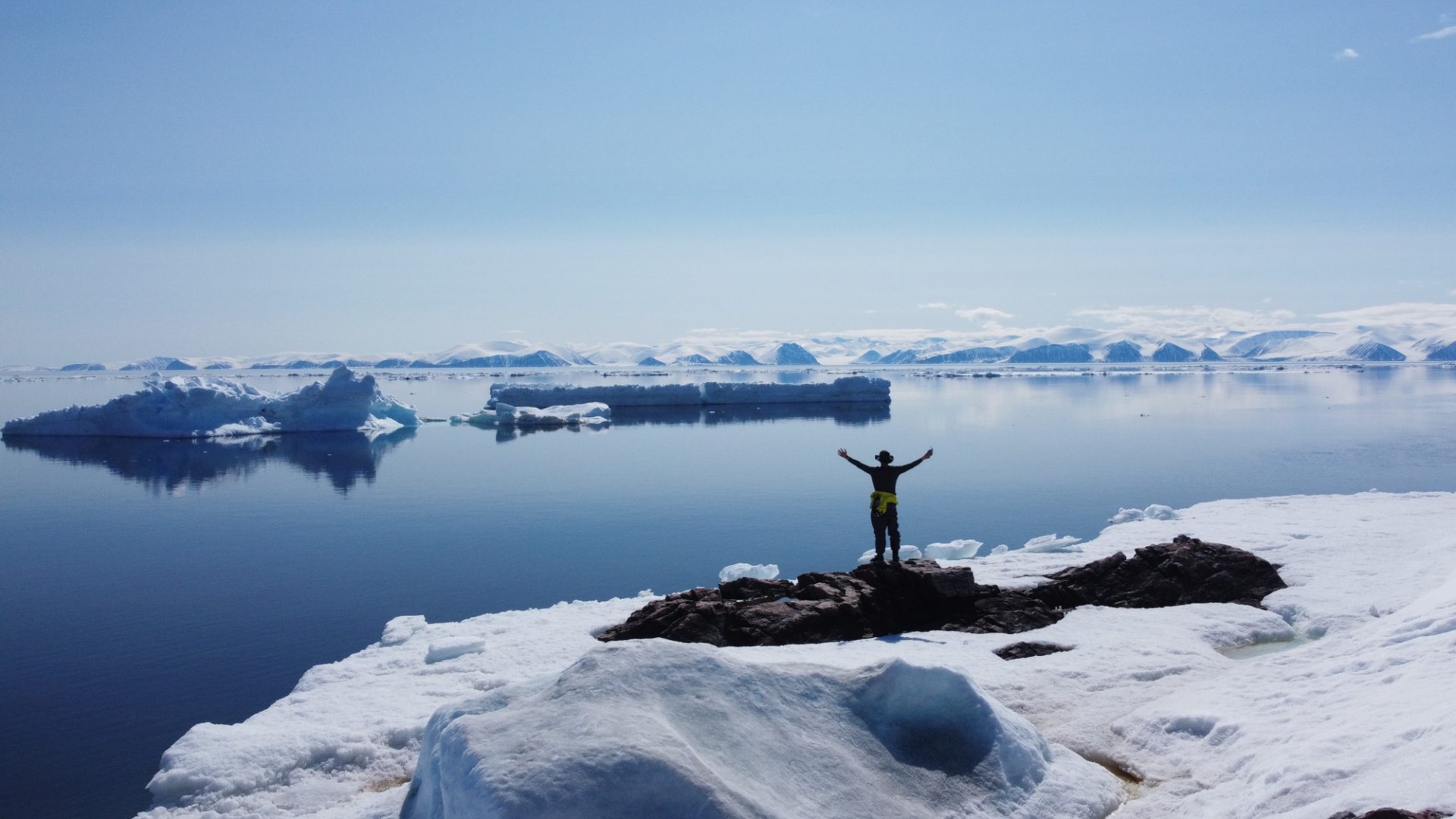It was the most spectacular sunset we’d seen in days. Behind me, the moon appeared over the rugged cliffs of Parry Peninsula, which reared straight out of the sea.
The cloudless sky promised a beautiful night, but I knew it came with consequences. Up here in the Arctic, without clouds to trap the day’s heat, the nighttime temperature plummets. I hurried to collect fresh water to drink and to make our powdered meals.
We were just over 100 miles from completing a kayaking expedition. We’d already been paddling for close to 100 days in an attempt to kayak the Northwest Passage. We would be the first to complete the journey by human power, with no motors or sails, in a single summer. For long stretches, we saw no signs of humanity. The difficulty in fulfilling our most basic needs, like collecting water, was a reminder of how isolated we were.
But in the second half of our journey, we saw massive Coast Guard ships on patrol. There were cruise ships too, taking hundreds of passengers through the Northwest Passage. But there were other reminders of humanity.
Above us, on a hill overlooking Cow Cove, was a warning system tower, buzzing gently, on the lookout for the enemy. Since Cambridge Bay, we’d seen several structures, and each time our hearts soared with joy at the prospect of a cabin and a warm sleep. But what we thought were shelters turned out to be dull, metallic Nato fuel tanks, their pipes running down to the shore for the benefit of passing ships – western ones, at least.
The words Nato and “flammable” were written on the sides. One of these sites was surrounded by large containers, about four metres high, covered in tight white tarpaulin. The pipes running down to the shore were raised off the ground by concrete blocks. At one point, a low-flying plane with “surveillance” written on the side flew low overhead, scanning the water.
There was also the huge, pristine Canadian High Arctic Research Station (Chars) in Cambridge Bay, which looks like a university building and contrasts sharply with the one- or two-storey simple houses of the nearby Inuit hamlet. Chars is an expression of Canadian soft power, a way of stamping its presence in the Arctic.
But Russia is also increasing its presence in the Arctic, keen to take advantage of new shipping routes, and it is also worried about being encircled by Nato countries in the high north. Nato has reacted by adding the final two Arctic nations to its ranks. Activity on all sides is increasing. In August, Russia and its ally China conducted naval drills near the Bering Strait. The region has entered a new, very cold war.
The US Department of Defence created a new position in 2022 – deputy assistant secretary of defence for Arctic and global resilience. Many nations are increasing their investment in the north and their attention to it. In November, Lord Ashton of Hyde, chair of the International Relations and Defence Committee for the House of Lords, warned that: “We need to prepare for scenarios in which the Arctic becomes much more contested and subject to conflict.”
The driver behind this “more contested” tension is climate change. The ice is melting for longer each year and opening up possibilities for ships – and also access to resources.
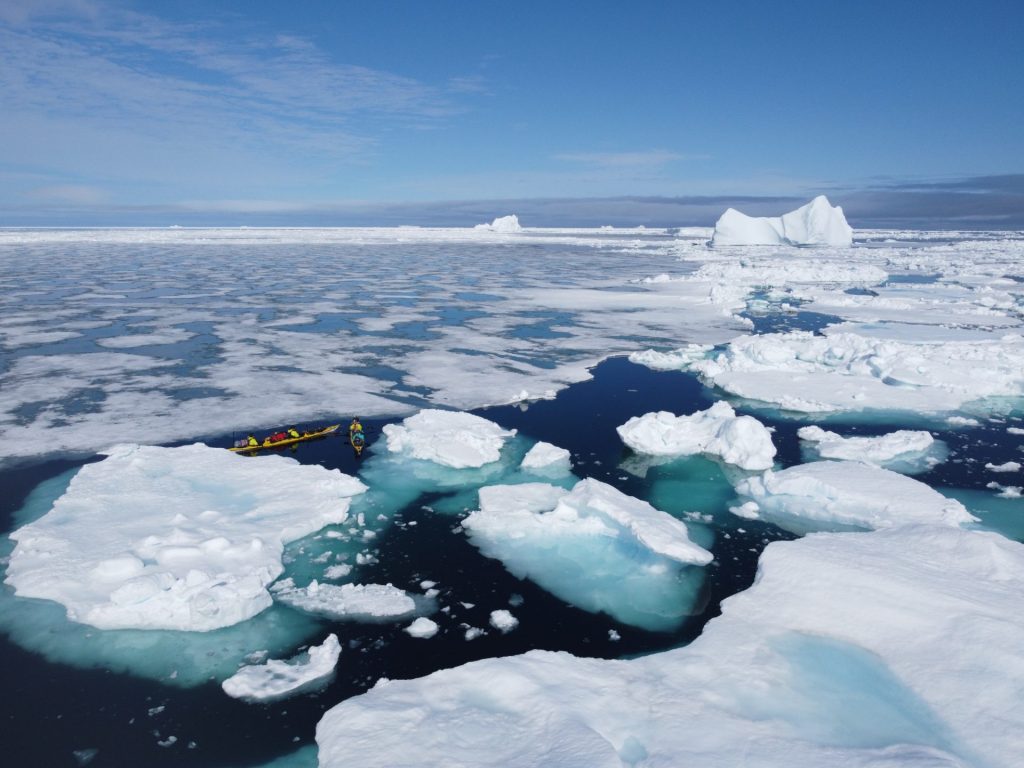
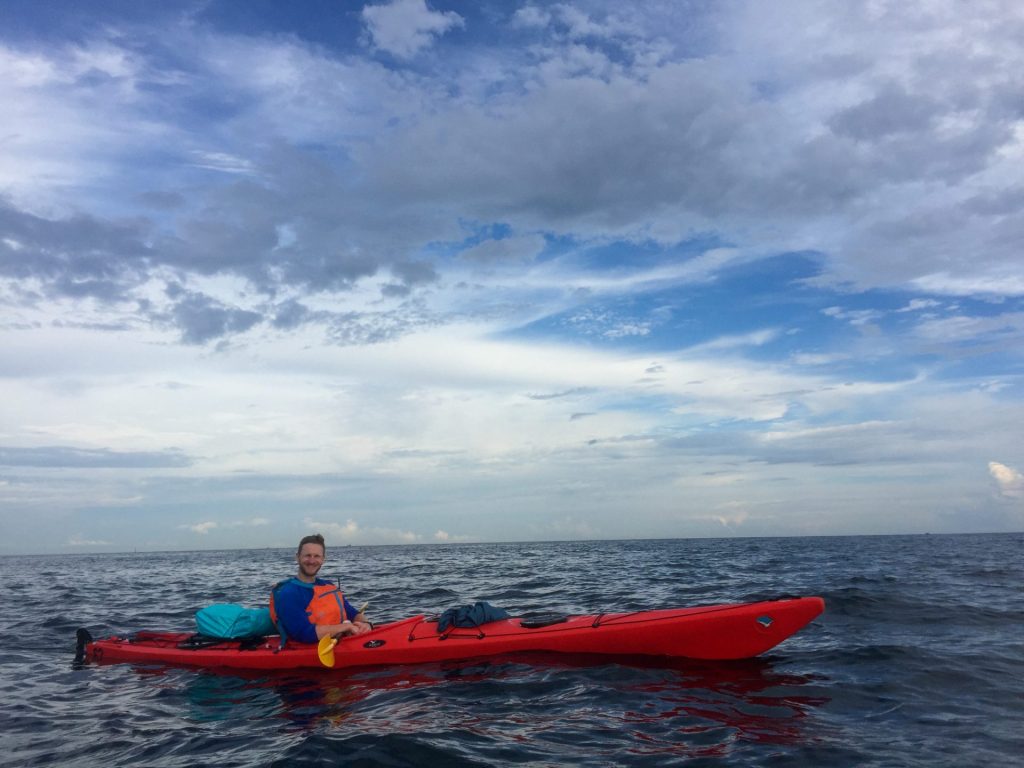
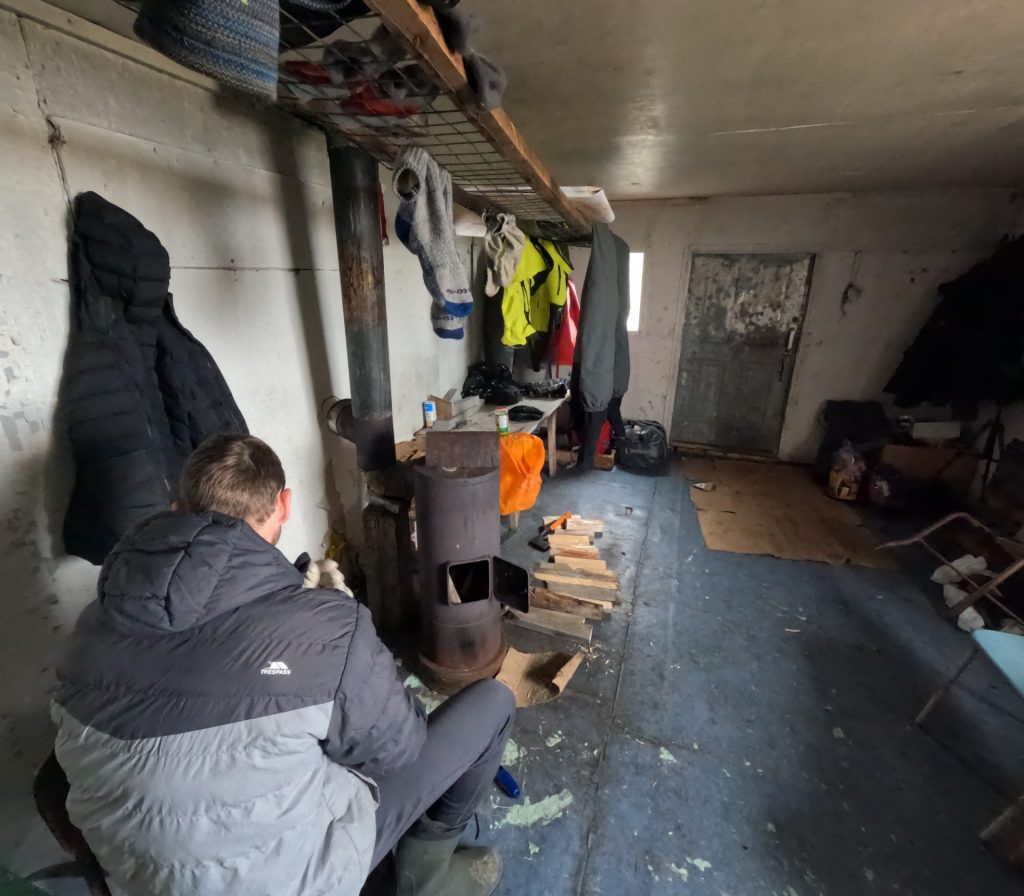
The Northwest Passage is one such route – a link from the Pacific to the Atlantic. For years, it was frozen over and inaccessible, but as the ice disappears, it is open for longer every year. The only reason we could kayak the Northwest Passage was because of the retreating ice. But having lost the feeling in my toes for months on end, I wondered – was it really possible that a war could break out in the most inhospitable ocean on earth?
“The likelihood of a real conflict in the Arctic itself is rather limited,” said Mathieu Boulègue, a Russia expert at Chatham House. “It’s a simple reason – nobody wants to fight in the region. It’s just too complicated.” The climate, the ice, the difficulty communicating, the lack of satellite coverage all make for an unlikely arena of war.
“Russia increases its presence in such a way that it’s very visible,” said Boulègue. “Very overt, looks very offensive, of course, because they’re placing assets that are definitely going way beyond what is just necessary to protect your homeland. But it’s Russia, right?
“As a key to national security and national interest, they militarise the hell out of it. It’s not Arctic-specific. It’s really about the Russian-Kremlin mindset.”
There are eight Arctic Nations – Canada, Denmark, Finland, Iceland, Norway, Sweden, Russia, and the United States. Finland joined Nato in 2023 in the wake of Russia’s invasion of Ukraine, and Sweden is set to join too. Russia’s nightmare is that the other seven will encircle it, so it is adding military assets in the Arctic. The others are seeing this and gearing up too, pushing the region into an armaments race.
Experts predict that, in 70 to 100 years, the Arctic ice will disappear to such an extent that ships will be able to cross straight over the North Pole. More pessimistic estimates suggest a much shorter timeline. This means that ships would be able to pass through international waters without bothering Canada’s Northwest Passage or Russia’s Northern Sea Route.
The bad news is that “ice-free” does not mean free of ice. It means an area of ocean with at least 15% sea ice concentration.
We found out just what “ice-free” means on our expedition. As we neared the far side of the 50-mile-wide Prince Regent inlet, after 10 hours of paddling we celebrated and patted ourselves on the back. But in the last few miles, ice began to float into the inlet from the north. We dodged and weaved our way through the floes, but the more we fought, the more trapped we became.
It wasn’t the first time we’d been caught in the ice. At the start of the expedition, we’d been stuck on land for two weeks as the ice pressed against the shore. Other times, ice had slowly moved in around us and we had to wait for it to disperse. It was frustrating, but a beautiful experience – the ice was mesmerising and turned the water a translucent blue. Dozens of narwhals had swum around us; polar bears had bounded across the ice or paddled between bergs; seals had leapt from the water and bowhead whales had lazily floated by, raised their tails and dived.
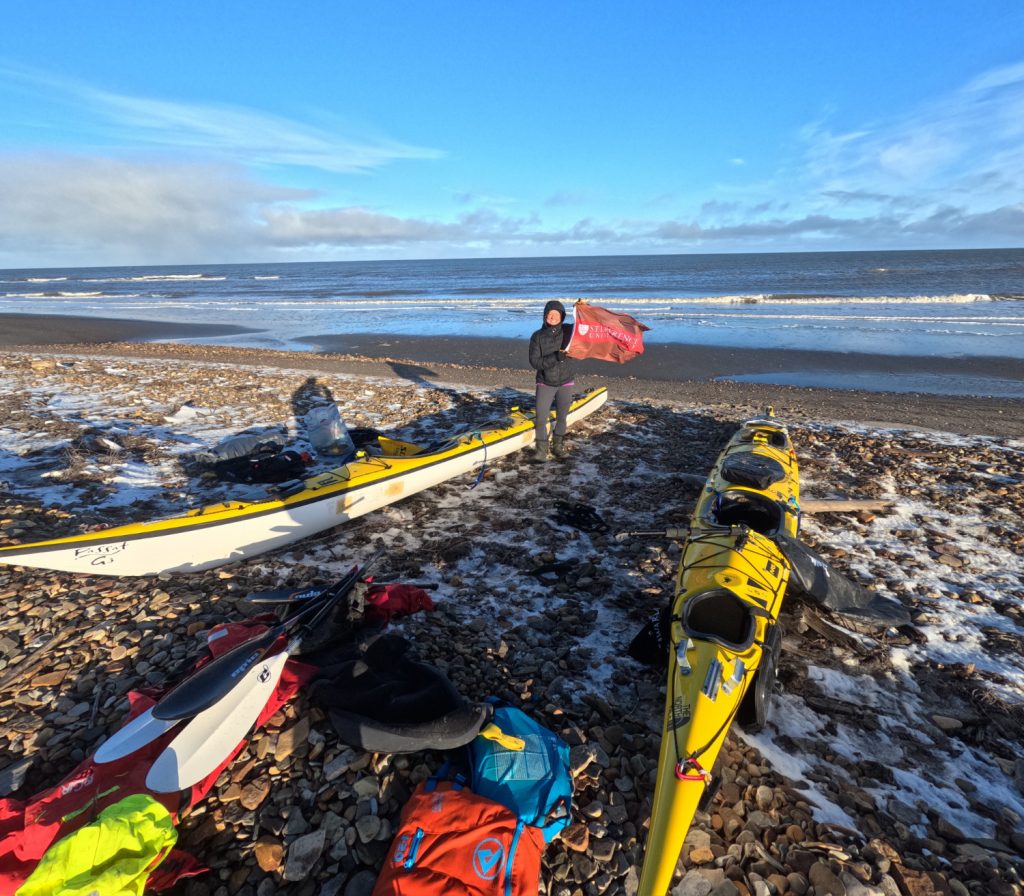
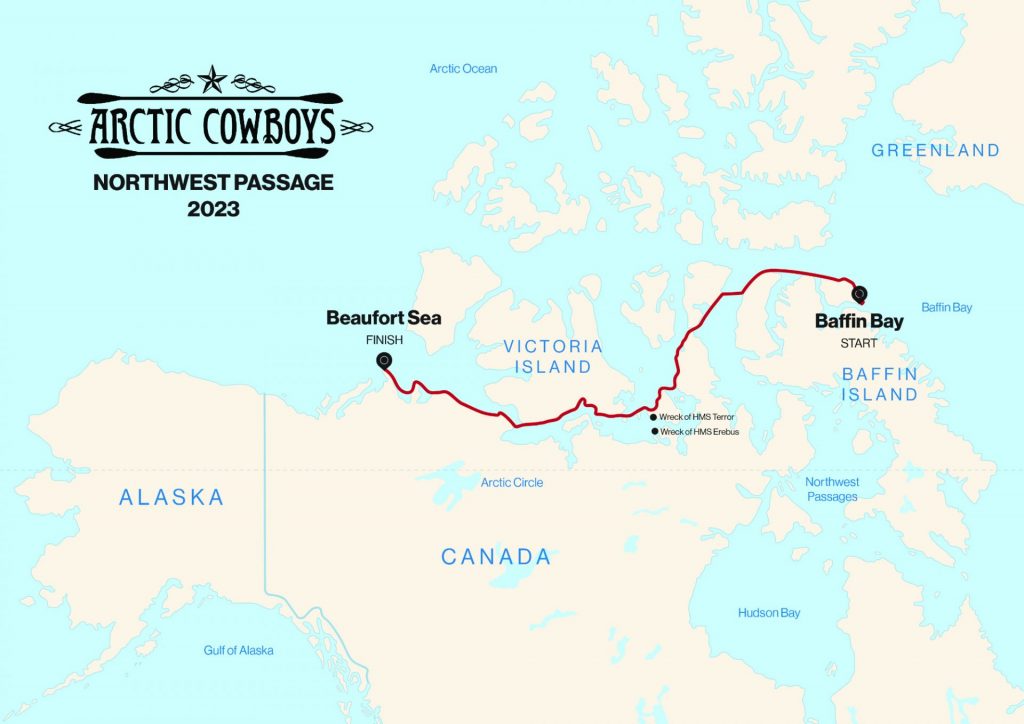
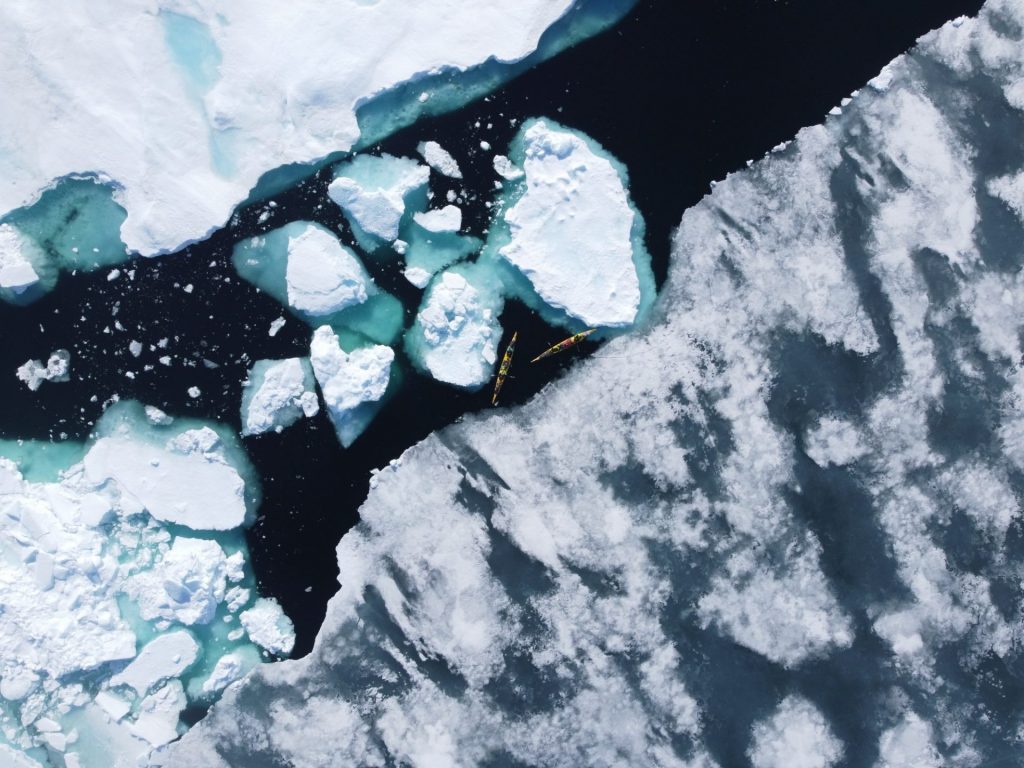
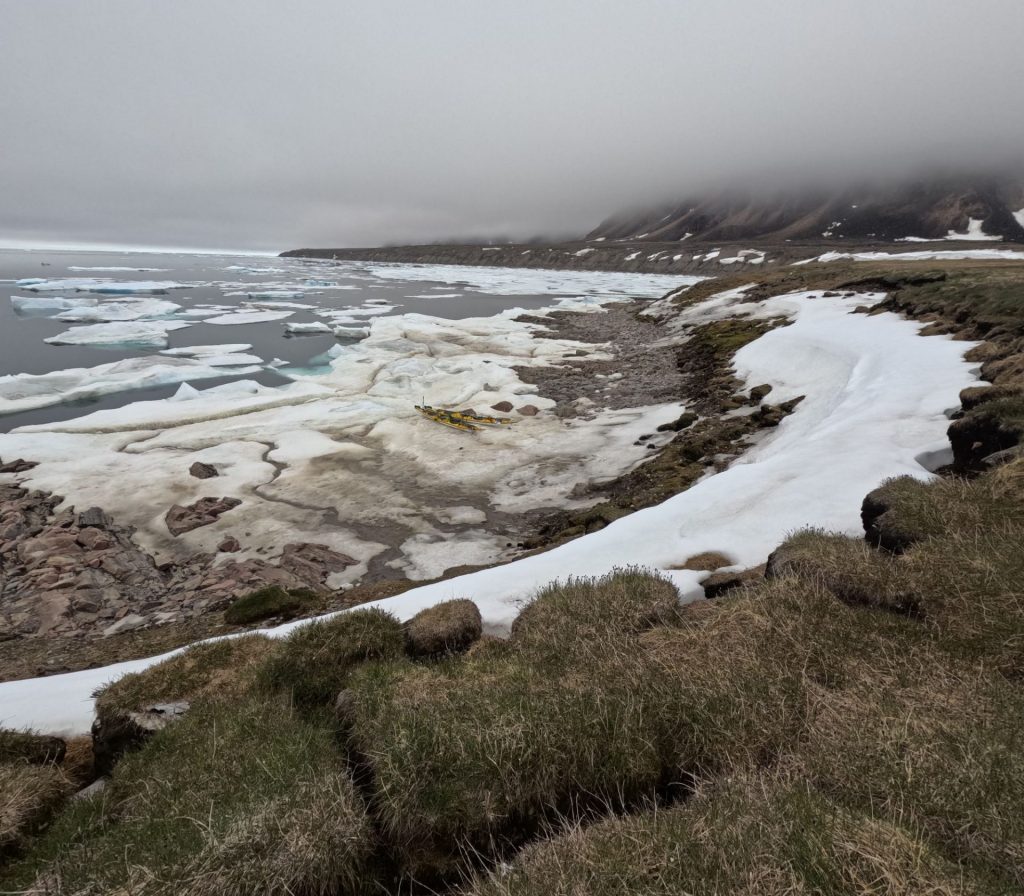
But this time, it was different. This ice was more dynamic – it crunched and spilled over itself like lava. We were half a mile from shore and had no hope of making land.
Eventually, we found some water between the huge hunks of ice. As we floated, two enormous ice floes changed direction and began to move towards us and with irresistible force, the two ice floes collided with our flimsy tandem kayak. One square metre of sea ice weighs a ton. Each of these ice sections was 10 or more metres across – we were going to be crushed to death.
By a miracle, the pressure lifted the kayak up out of the water and I leapt out on to the ice, and along with my fellow rower, Eileen, pulled the kayak on to it.
The other kayak was in trouble. The ice had pushed its nose on to the ice flow so that one of my fellow adventurers – West – was out of the water, but the pressure of the ice was rotating the boat meaning that Jeff, in the back, was being slowly lowered into the deadly water.
In a very relaxed Texan accent, Jeff said: “Mark, we’re gonna need some help here real quick”. I sprinted over and dragged them on to the ice.
The four of us stared out at the icescape on our floating block. Just an hour before it had been open water. Now it was a seething melée of ice. All we could do was stand and wait until the ice shifted again. If you stand still in the Arctic, you get very cold.
Larger vessels going via the North Pole as a shortcut will also run into trouble, but they will be escorted by icebreakers, and these can often be military boats. Imagine if China sent a military vessel through the narrow gap between Russia and the USA, and out into the North Atlantic via the narrow Greenland-Iceland-UK (GIUK) gap. It would be extremely provocative.
Boulègue imagines other scenarios that could lead to miscommunication and an unwillingness to de-escalate. If a Russian fishing vessel needed to be rescued and its crew turned out to be military – are they now military hostages?
Rather than outright war, Boulègue predicts an increase in political standoffs and periods of heightened tension – but no more than that. The terrain is just too harsh a place for the military to operate, let alone fight. But Ed Arnold, research fellow at the Royal United Services Institute, a UK defence think tank, thinks the inaccessibility of the Arctic in fact heightens the chance of escalation to war.
“I’m not saying war is necessarily likely, as defence and deterrence is working,” Arnold said. “But when you’re looking at potential escalation points, then yes, the Arctic is a serious one.”
Russia’s chain of command has been shown up in Ukraine. That would only be exacerbated in the Arctic where communication is hard and satellite coverage is sparse, conditions that heighten risk. Consider this: in September 2022, in the Black Sea, a Russian pilot fired on an RAF plane under the impression they had permission to engage. Thankfully, the missiles missed. That potentially catastrophic mistake occurred in a region where communications are easy. An area such as the Arctic would be the perfect crucible for a major confrontation. As Arnold puts it: “There’s a lot of potential for miscalculation up there.”
From our camp below the north warning system tower, we paddled 16 miles to prepare for one final 40-mile crossing. We needed good weather, but it was October by then. We waited, then finally crossed to the far shore.
We were just 49 miles from the end of the Northwest Passage – just two days’ paddling. We woke up the next day and the world had changed. Winter had come. The mountains were white. Some of the shallows were freezing over. It had been weeks since we’d seen sea ice. The last we’d seen of it was in Prince Regent inlet just after it almost crushed me and Eileen. Now we were seeing it at the start of its life cycle all over again.
Most worryingly, all the freshwater froze. We set off that day unsure of when we’d next find drinking water. That night I broke through a frozen puddle and collected water. We were then just 16 miles from the end. We packed up in the morning and departed, excited to reach our goal.
The Northwest Passage gave us nothing for free. In the last few moments we unexpectedly found ourselves in breaking waves about 8ft high, which curled and smashed on to shore. This meant kayaking through the surf. The last wave reared up over us and fell on me with all its force. Even as I braced for impact it threw me against the back of my cockpit and winded me. Panting for breath, Eileen and I dug our paddles into the water and propelled ourselves forward into the calm water of the Beaufort Sea. I cried and cried.
The weather deteriorated further. We couldn’t hear each other speak in the tent as the wind shook it violently, creating a symphony of flapping. I had to go out in the pitch dark and dig the back of our tent out from under a pile of snow.
When the weather calmed, we made one final crossing to the airport. We could see another north warning system tower and we used it as a guide point. At long last, we landed and the next day, a plane came and we departed. It had been 103 days since we were dropped in the wilderness.
The last north warning system disappeared as we climbed into the sky. I knew I’d seen the Arctic at an inflection point. War or no war, politically and environmentally the Arctic is changing for ever.
Mark Agnew is a UK adventurer notable for kayaking the Northwest Passage, and was awarded European Adventurer of the Year 2023. He is also an adventure sports journalist, author, and speaker

